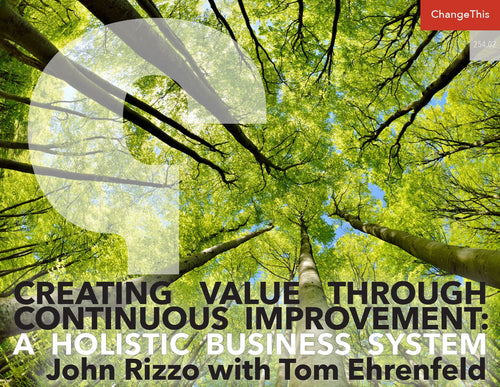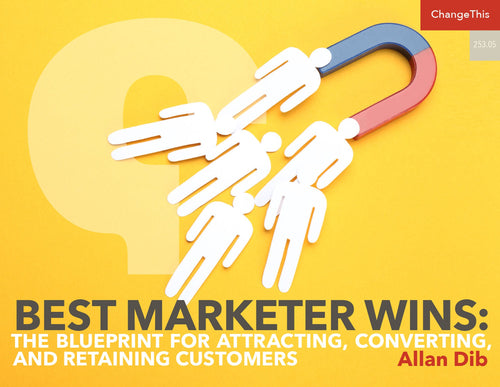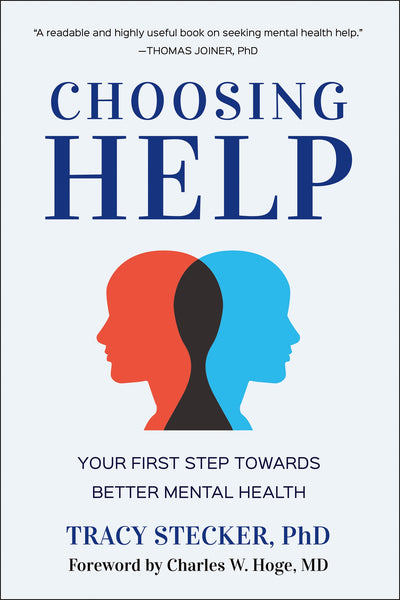The Competitive Advantage of Flexible Work
It’s clear that workers want flexibility, especially schedule flexibility, but that alone isn’t enough to convince some leaders to make what can (and should) be a substantial structural and cultural shift. The most convincing reason is the rewards. Mounting evidence shows that flexible work enables organizations to do three key things that are critical across industries:
1) WIN THE BATTLE FOR TALENT
In 2021 the top concerns for CEOs centered on people. As the authors of a Fortune/Deloitte CEO survey put it: “When asked about the biggest challenge they face today, CEOs named one above all others: talent, in nearly every form. Attracting, hiring, retaining, developing, growing, and engaging talent.”1 In fact, winning the battle for talent may be the most common reason companies adopt flexible work programs. As Helena Gottschling, Chief HR Officer for the Royal Bank of Canada, put it when talking about their flexible work model,“If done right, we believe it could be a true differentiator.”
First, let’s look at how it can help with an organization’s recruiting efforts. There’s really no way around it: When employees work in an office, they must live within a commutable distance from that office. This limits the talent pool that organizations can draw from. It’s also one of the main reasons that companies locate their offices in dense (and often expensive) urban markets, where there are more potential employees to choose from. But flexible work allows you to simply choose the best person for the job regardless of location. It opens up possibilities for both employees and companies. Tracy Layney, Chief Human Resources Officer at Levi Strauss & Co., is located in the Bay Area, but the vast majority of her leadership team is not—a situation she’s quite happy with.“ I just want the best talent,” she told us. “There’s all this amazing talent in the world, so why would I want to narrow my choices to people who already live here or are willing to move to a place with a super high cost of living?”
There’s also the fact that more people are looking for flexibility, so it’s a real draw for companies, and it’s an area where they can see an immediate impact. Soon after instituting their flexible work model, Dropbox began receiving three times the number of job applicants that they had gotten previously. We have seen similar benefits at Slack: a 70% increase in job applicants in Product, Design and Engineering after the company allowed for location flexibility.
Because people are looking for flexibility, particularly schedule flexibility, it’s a model for retaining talent as well. In fact, flexibility ranks second only to compensation in determining job satisfaction.2 That’s because it provides real benefits to workers on a personal level. Research shows that flexible work leads to markedly less stress (six times less with schedule flexibility), a better work-life balance (45% higher), and better overall satisfaction at work (30% higher). And schedule flexibility can be a lifeline for those juggling responsibilities outside of work. The tug of caregiving responsibilities impacts three out of four workers, according to a Harvard Business School study.3 Those responsibilities can impact job performance and even force some people out the door. But flexible work options can be a game-changer for caregivers. Women with kids, for example, say that the number-one benefit of a flexible schedule is “being better able to take care of personal or family obligations during the day.” (Men with kids rate “better work-life balance” as the key benefit.)4
Flexibility gives individuals room to meet both their personal and professional obligations. That’s important because, as all leaders know, replacing employees is a time-consuming and costly endeavor, one that can amount to as much as twice an employee’s annual salary.5
2) ENGAGE EMPLOYEES
Every year Gallup conducts their State of the Global Workplace report, and every year it points to the same problem: a majority of employees are either not engaged or actively disengaged at work. It’s an area where most companies are continually looking to improve because disengagement is expensive.6 But there is something that has been shown to have a positive impact: flexible work. Before the pandemic employees with at least some flexibility had the highest levels of engagement according to Gallup. That percentage actually rose to its highest point in 2020,7 despite all the disruptions that the pandemic brought, and the flexible work models that were imposed on companies were likely a big part of that.
One of the ways in which flexibility engages people is through inclusion, by making it easier for all kinds of people to participate and feel valued. Flexible work has the advantage of benefiting and supporting those who are commonly left out or sidelined in traditional work structures, which includes groups who have been historically discriminated against (as we’ll outline in greater detail later in the book). Flexibility also benefits others who don’t fit well into typical corporate structures. For example, Helen finds that flexible work better suits her introverted personality. Remote workers and those in satellite offices are more examples of groups that have traditionally been left behind. Their inability to participate fully in team events or meetings have left many feeling like second-class citizens. But when your meeting takes place in a digital space, everyone has an equal opportunity to participate. These are just a few examples, but there are many more ways in which individual employees can get left out, not because of the quality of their work or ideas, but because of things that should be far less important—like what they look like, how loudly they speak, or where they’re located. Flexible work allows companies to intentionally design formats for collaborating, creating, and innovating that are a better fit for all their people.
Flexible work can also lead to better creativity and innovation, even though leaders often express concerns that it will inhibit these things that are so crucial to growth. Future Forum research shows this concern is a myth, and in fact where people work has little bearing on how creative their team is. To give one example, there’s a persistent myth that the best method is to gather people in a room and brainstorm your way to new ideas. Companies have been doing this for decades, but countless studies have shown that this approach is a waste of time, at best; at worst it can lead to the dreaded groupthink and even harm productivity.8
3) BUILD BETTER RESULTS
Because it has a positive effect on common business challenges, like recruiting and retention; because it leads to happier, less stressed, and more engaged employees; because of these things and more, flexible work, when done right, quite simply drives better business results.
And yet leaders regularly have concerns. One of the most common ones is that flexible work will negatively impact productivity. Some version of the following question comes up often: “If my team members aren’t in the office, how will I know that they’re working?” The question itself is problematic because it calls to mind the kind of outdated, Industrial-Era mindset, focused on monitoring and presenteeism, that we discussed in the last chapter. That concern isn’t backed up by data. In fact, research shows just the opposite: flexible work actually increases productivity. And, it’s important to note, while location flexibility is beneficial, schedule flexibility yields even better results: a more than 30% increase in reported productivity.9
One example of productivity gains can be seen in Professor Prithwiraj Choudhury’s study of the US Patent and Trademark Office (USPTO) as they made the switch to a more flexible work model. He and his colleagues found a 4.4% boost in individual productivity in terms of the organization’s key metric for success—the number of patents examined each month. Contrary to expectations, quality of work didn’t suffer with the switch, but employee engagement rose considerably. In 2013, a year after the new policy took effect, USPTO topped the list of Best Places to Work in the Federal Government.10
Customer engagement can be positively impacted as well. At Slack, team members found that connecting remotely made it easier to meet with more customers during the day, as well as get time on an executive’s calendar since videoconferencing often felt less formal than an in-person meet. Where they used to be able to visit one client a day, sales staff say they can now do three videoconferences in a day. Salesforce found similar benefits: Their Zoom customer calls had 25% higher C-level attendance and their sales teams reported getting back two weeks of selling time due to their virtual sales kickoff taking up less time on their calendars than previous in-person ones.
Another way that flexibility builds better results is by enabling diversity, which, as is now well-known, has a positive impact on results. There are numerous studies that support this, including one done by Boston Consulting Group in 2017 that linked diversity and profitability: Companies with above-average diversity among their executive teams saw EBIT (Earnings Before Interest and Taxes) margins that were 9 percentage points higher than those who were below average. Even more striking, those same companies reported innovation revenue that was 19 percentage points higher than that of companies with below-average leadership diversity—45% of total revenue versus just 26%.11 Diverse companies also tend to grow faster, be more innovative and adaptable, have higher cash flow, and even be better at building leaders.12
In spite of the great potential of diverse organizations, especially in solving today’s most complex problems, many leaders struggle with the friction that comes with diverse teams. Flexible work, while not a total solution, is a tool that can help for a variety of reasons.
For one, about 60% of the Black labor force in the US is located in the Southeast, compared to only one-third of private sector jobs.13 Location flexibility allows companies to attract employees who live far from their offices. We have already seen how this benefited Dropbox, who saw a 16% increase in diverse candidates. As a result of the transition to flexible work, Slack has hired one-third more remote-based historically discriminated employees than office-based.
Future Forum research shows that large majorities of Black, Hispanic, and Asian respondents in the US all want flexible work—which means it can have a positive impact on recruiting and retention among these groups. The same is true for women, and we have already talked about some of the benefits to working moms and other caregivers who are disproportionately female. Flexible work can also offer a better experience to groups that have been historically discriminated against. For example, Black employees who work remotely have a higher sense of belonging than those who work in the office.14 There are likely a variety of reasons for this. As Stanford professor, Brian Lowery, explains, office-centric work can perpetuate outsider status: “Black employees can experience stress associated with working in a predominantly white workplace, which contributes to a lower sense of belonging. Importantly, it might not be work activities per se driving these effects, but all of the big and small social interactions that make up much of our work days.”15
Finally, it’s worth noting the impact flexible work can have on your bottom line. Retaining employees saves companies money. Increasing productivity makes companies more money. Decreasing the need for costly expenditures on things like office buildings in expensive urban centers and travel to and from different client and company locales frees up resources that can be put to better use elsewhere—on those things that will drive the outcomes you want. Think of it this way: Would you rather invest money in the seats your employees occupy or in the things that will enable those employees to do their best work, no matter where they sit?
Adapted from How the Future Works.
Copyright © 2022 by Brian Elliott, Sheela Subramanian, Helen Kupp.
All Rights Reserved.
ABOUT THE AUTHORS
Brian Elliott is Executive Leader of Future Forum, a consortium backed by Slack and founding partners Boston Consulting Group, MillerKnoll, and Management Leadership for Tomorrow. Future Forum enables leaders to redesign work to be better for people and organizations. He has spent three decades leading teams and building companies as a startup CEO, at Google, and now at Slack where he is a Senior VP. Brian’s a proud father of two young men.
Sheela Subramanian is Vice President and co-founder of Future Forum. She has 20 years of experience building high-growth global teams across Google, Slack, and startup organizations. As a champion for workplace equity, her work is cited in the Wall Street Journal, New York Times, Fast Company, and other top-tier publications. Sheela earned her BA from Stanford and MBA from Harvard Business School and is the mother to two magical daughters.
Helen Kupp is a co-founder and Senior Director of Future Forum. She has led many of Slack’s largest cross-functional and growth initiatives, and is the creator of many of Future Forum’s playbooks, tapping Future Forum’s research and networks along with her experiences at Slack, Bain & Company, startups, and her MBA from Harvard Business School. She’s also the lucky mom of two wonderful children.











































